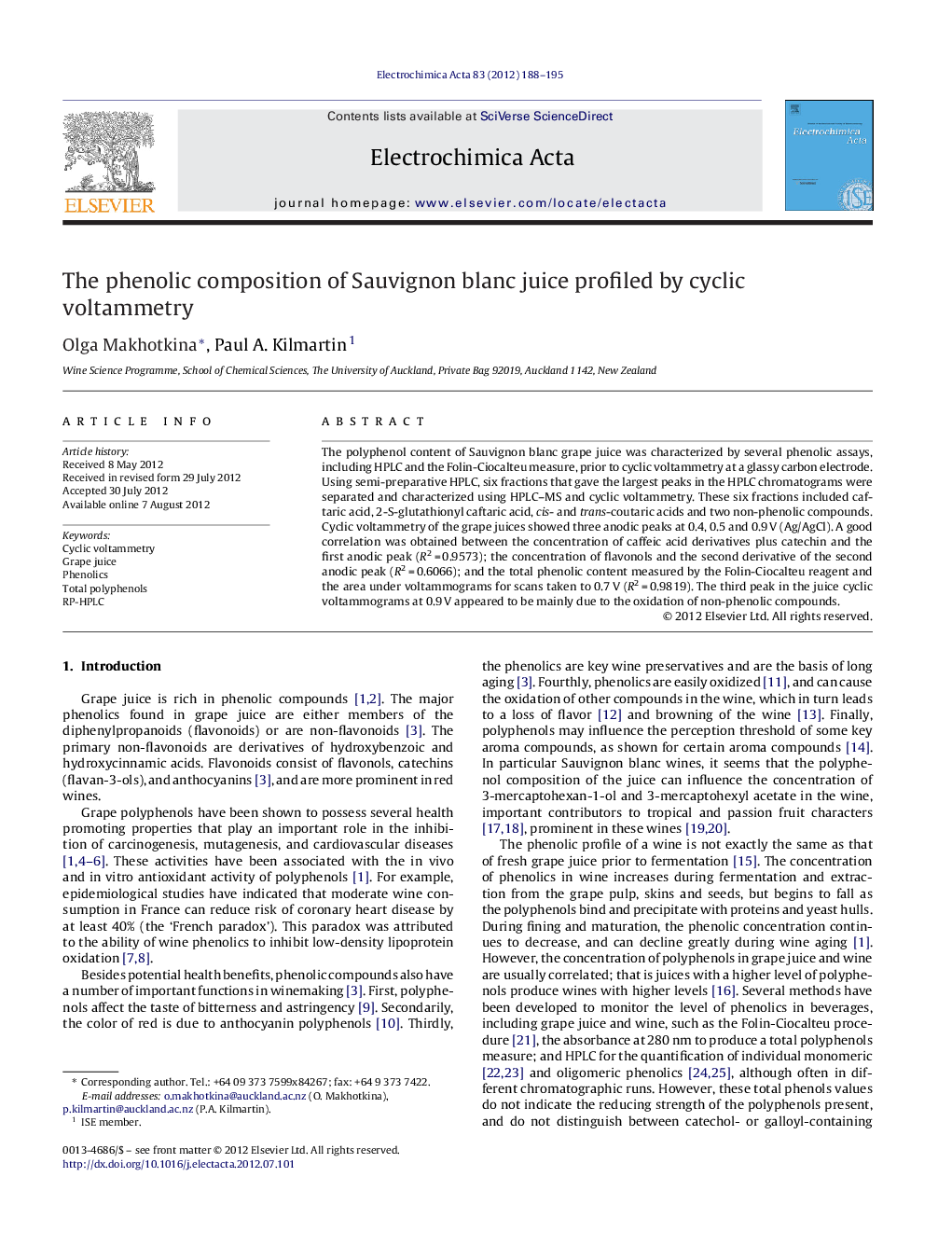| Article ID | Journal | Published Year | Pages | File Type |
|---|---|---|---|---|
| 188078 | Electrochimica Acta | 2012 | 8 Pages |
The polyphenol content of Sauvignon blanc grape juice was characterized by several phenolic assays, including HPLC and the Folin-Ciocalteu measure, prior to cyclic voltammetry at a glassy carbon electrode. Using semi-preparative HPLC, six fractions that gave the largest peaks in the HPLC chromatograms were separated and characterized using HPLC–MS and cyclic voltammetry. These six fractions included caftaric acid, 2-S-glutathionyl caftaric acid, cis- and trans-coutaric acids and two non-phenolic compounds. Cyclic voltammetry of the grape juices showed three anodic peaks at 0.4, 0.5 and 0.9 V (Ag/AgCl). A good correlation was obtained between the concentration of caffeic acid derivatives plus catechin and the first anodic peak (R2 = 0.9573); the concentration of flavonols and the second derivative of the second anodic peak (R2 = 0.6066); and the total phenolic content measured by the Folin-Ciocalteu reagent and the area under voltammograms for scans taken to 0.7 V (R2 = 0.9819). The third peak in the juice cyclic voltammograms at 0.9 V appeared to be mainly due to the oxidation of non-phenolic compounds.
► Cyclic voltammograms of grape juices at a glassy carbon electrode showed 3 anodic peaks. ► The first peak at 0.4 V was due to oxidation of hydroxycinnamic acids and catechins. ► The second peak at 0.5 V was due to the oxidation of flavonols, identified using LC–MS. ► The third peak at 0.9 V was mainly due to the oxidation of non-phenolic species.
